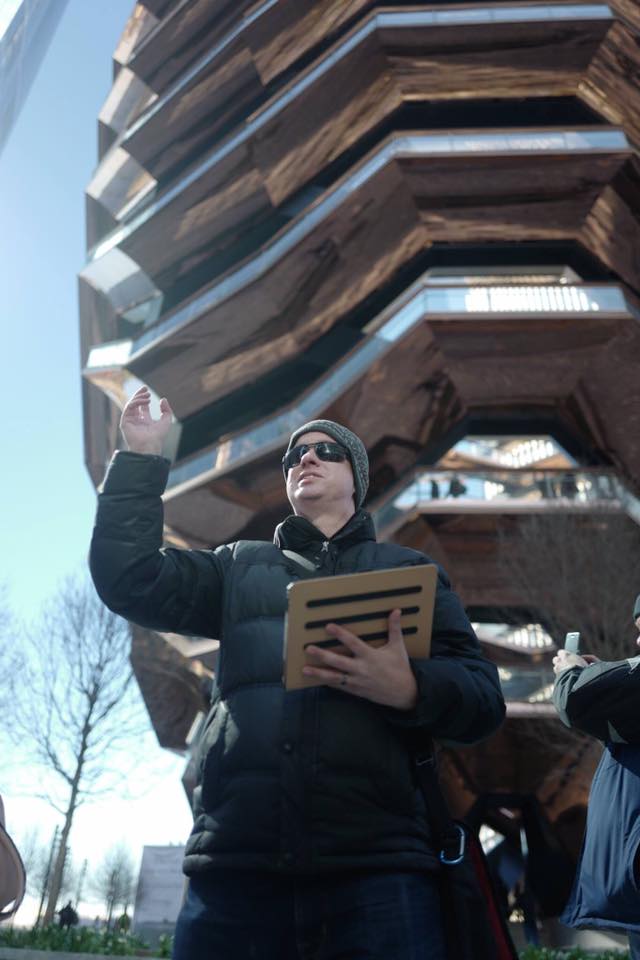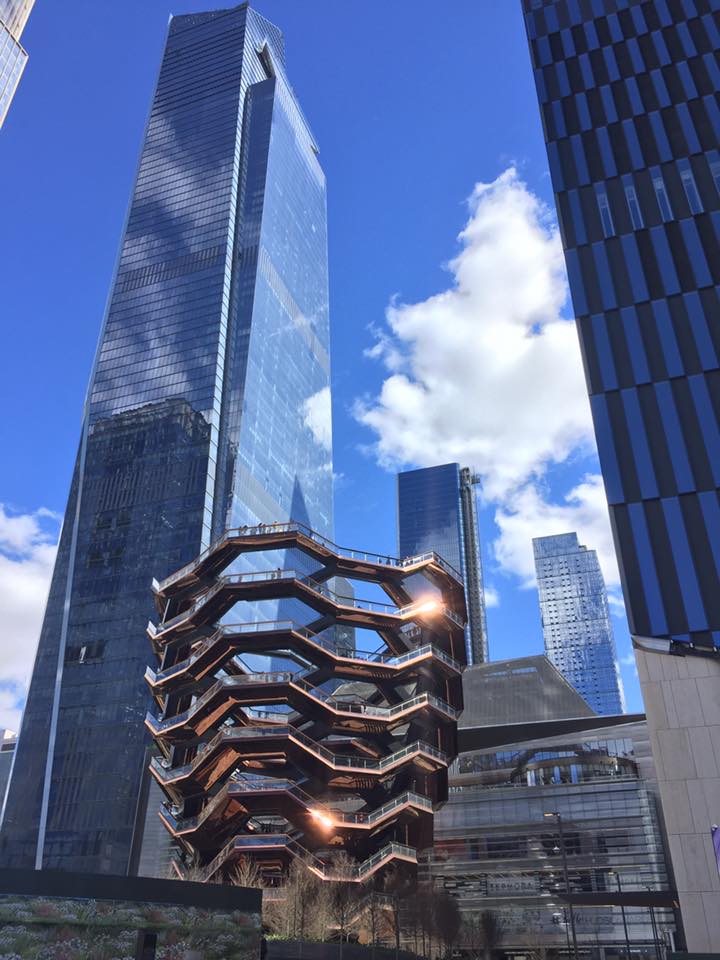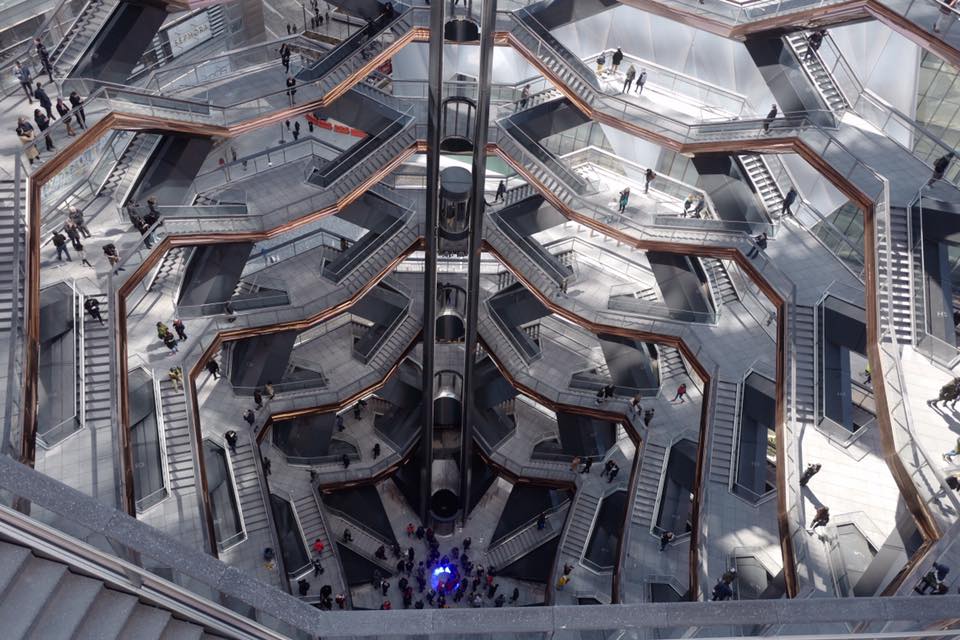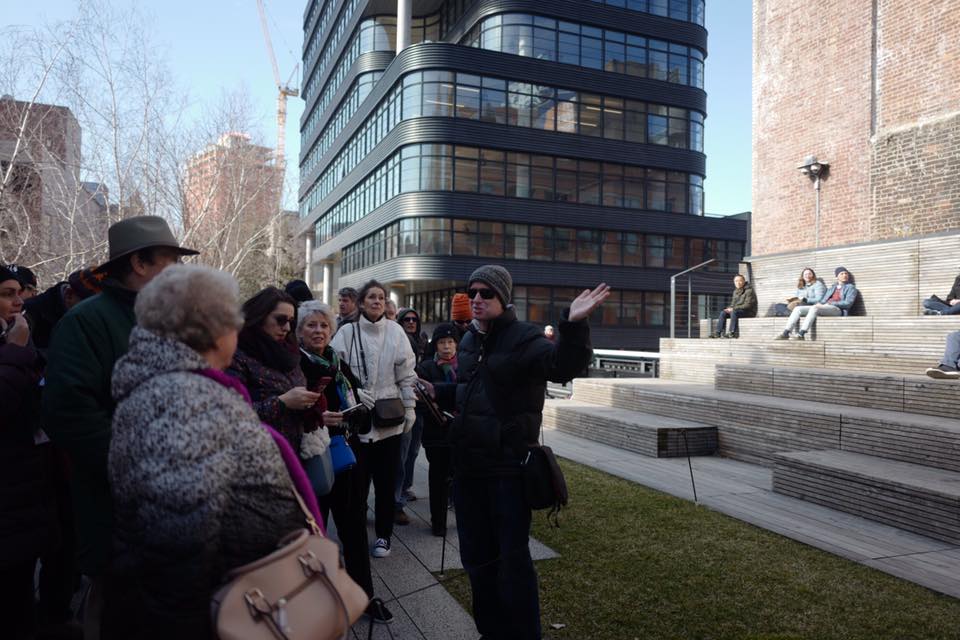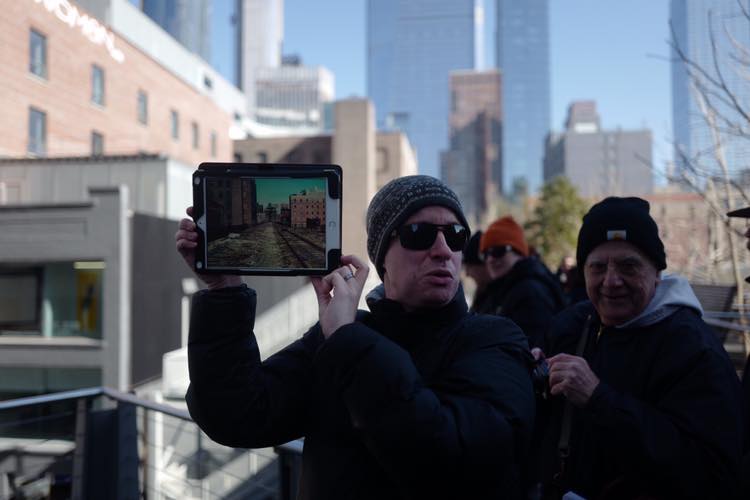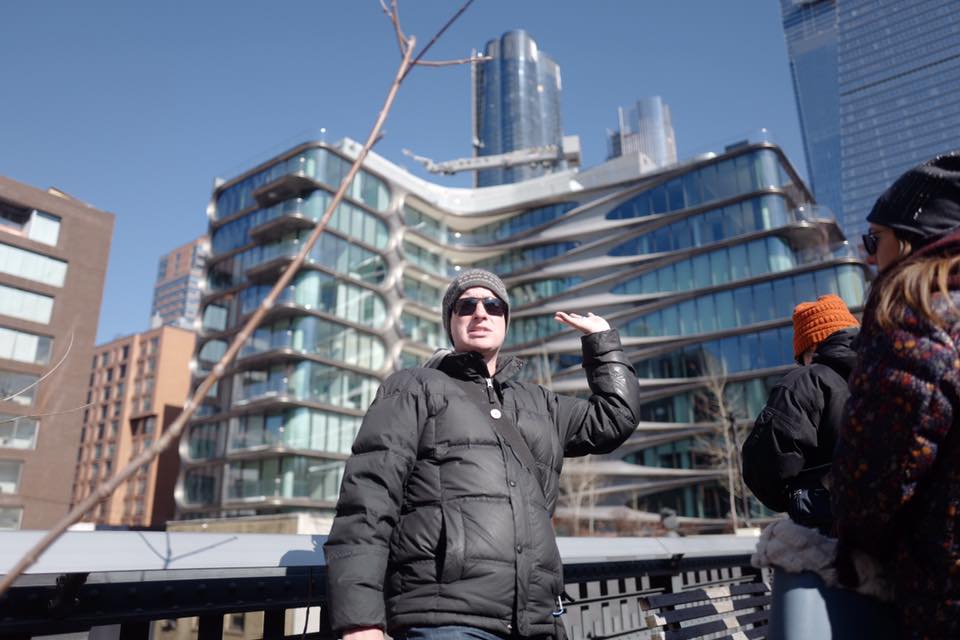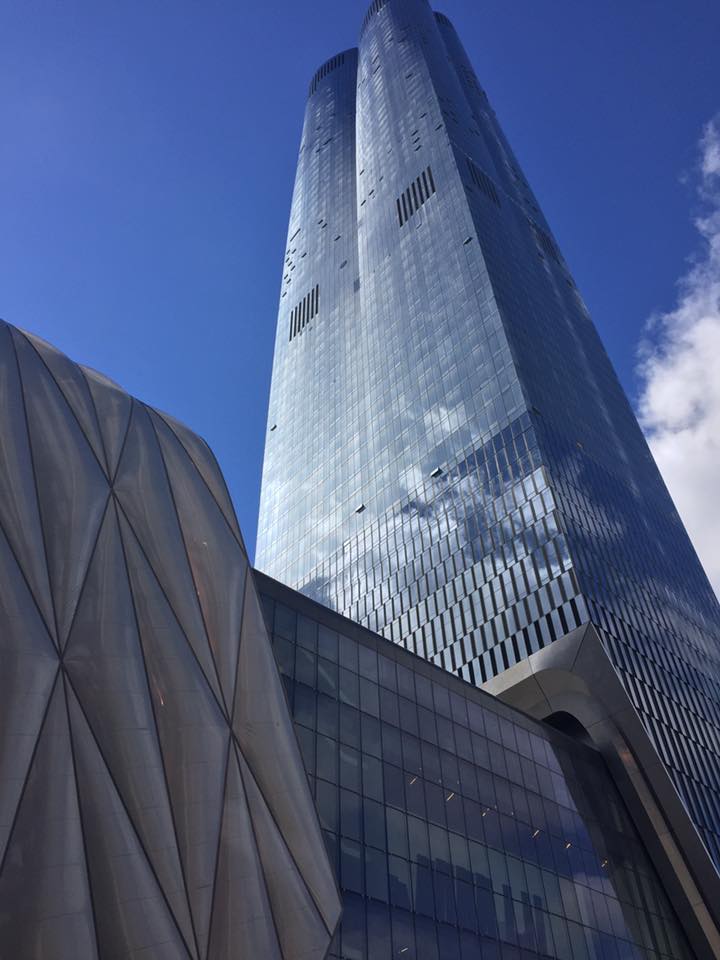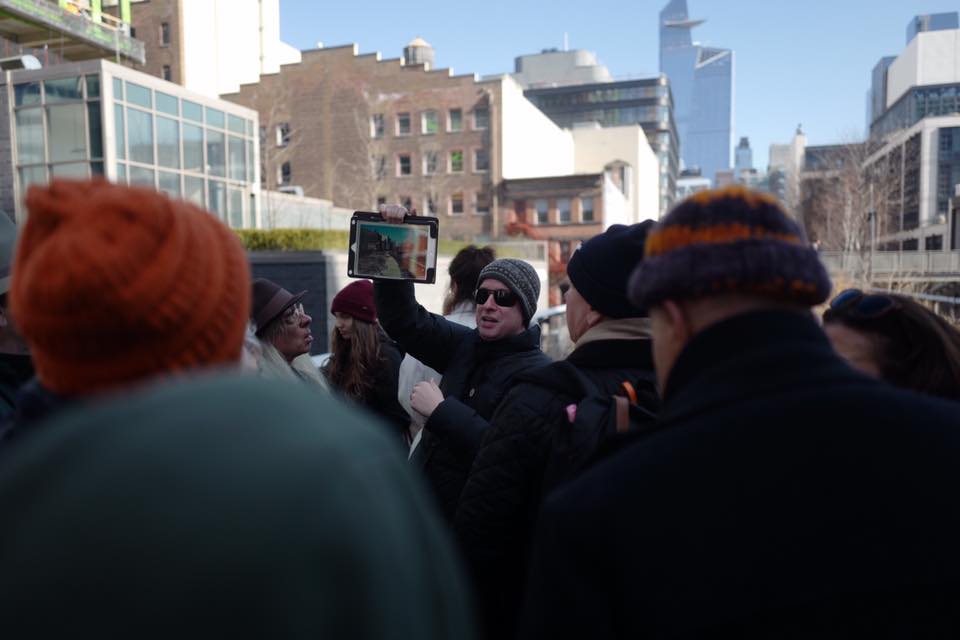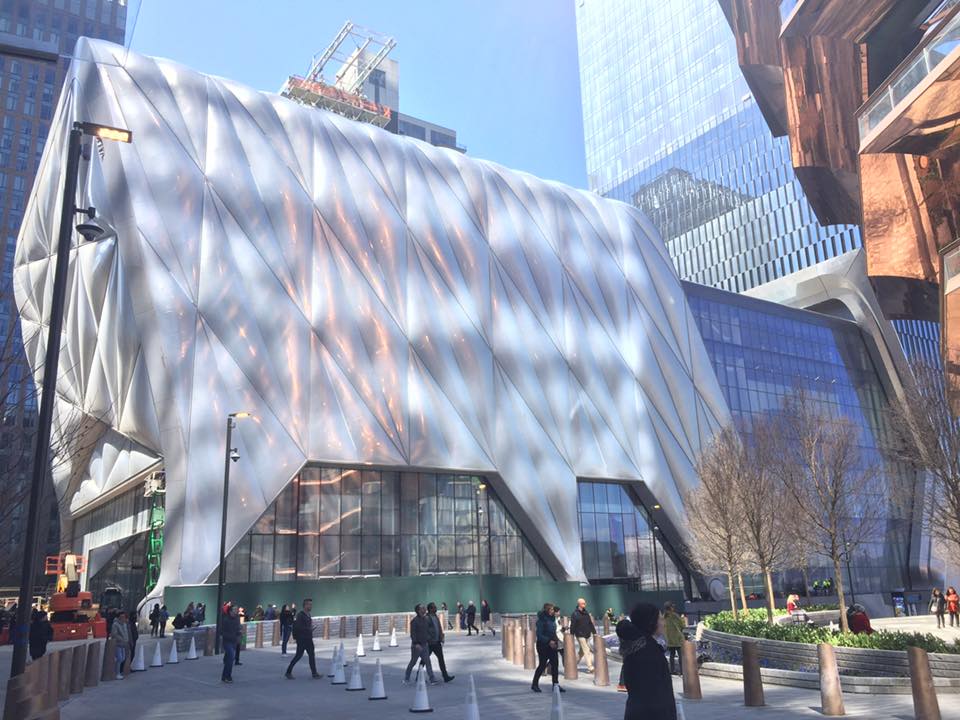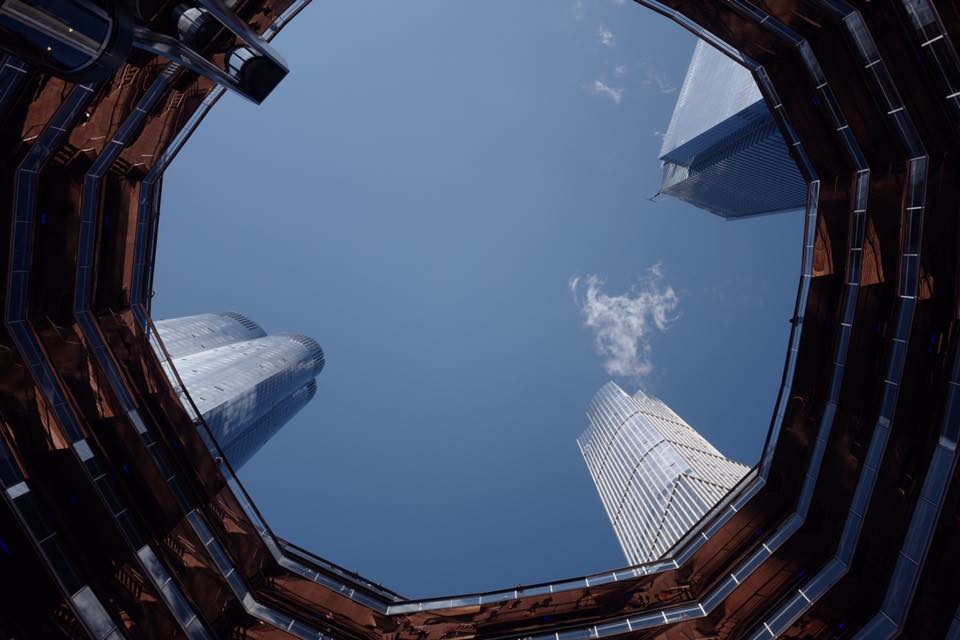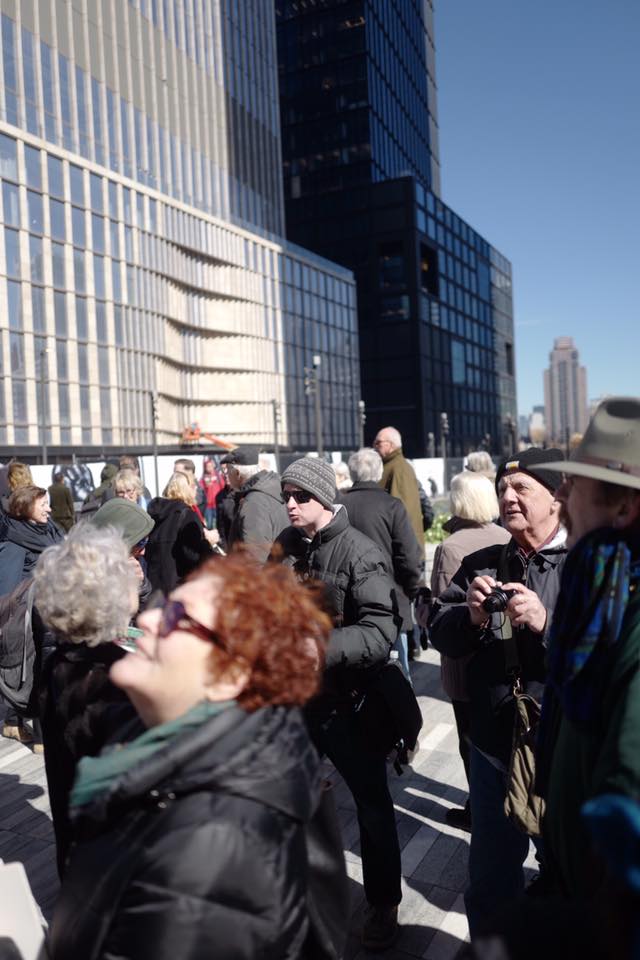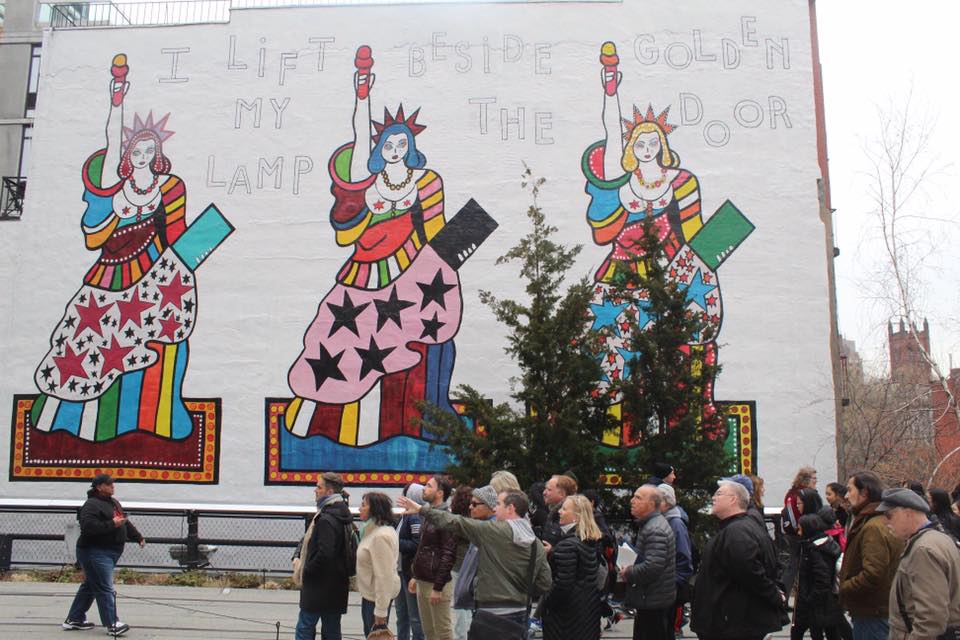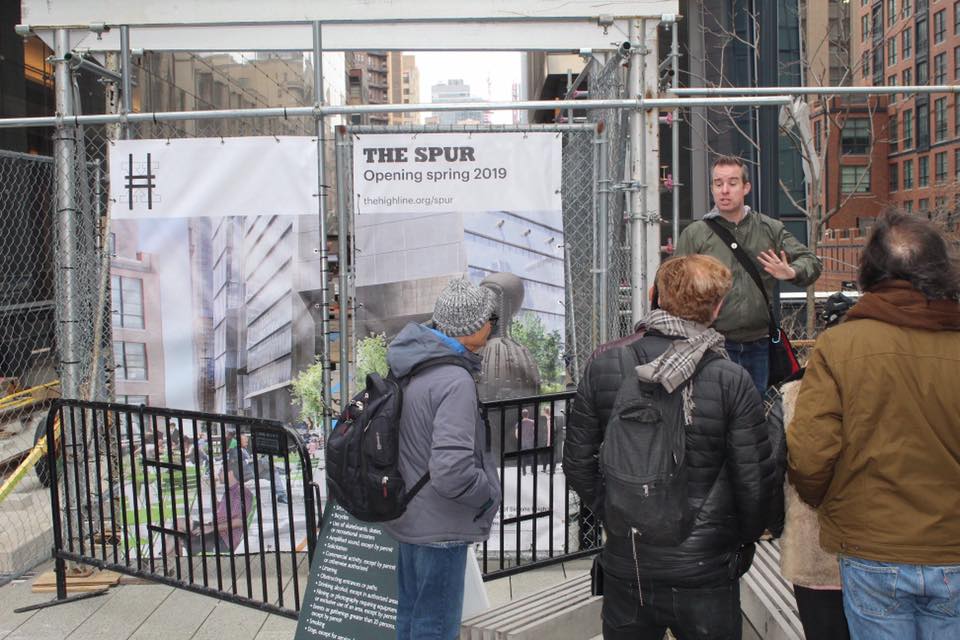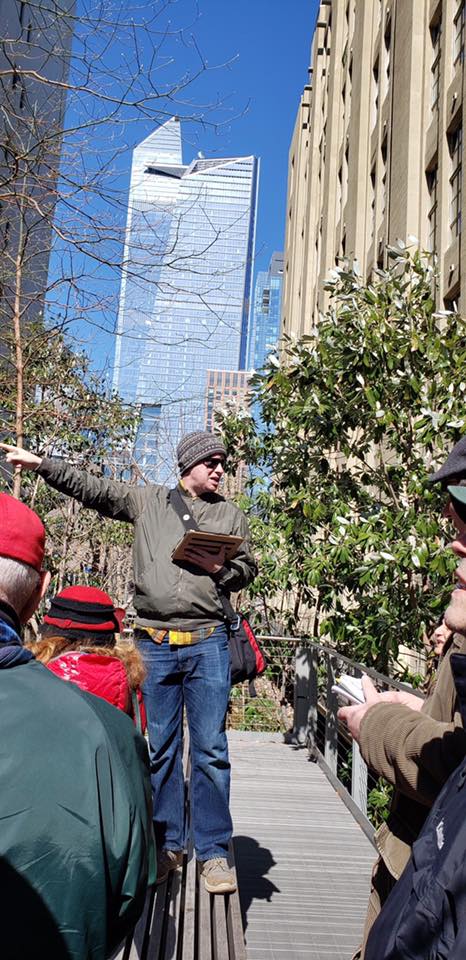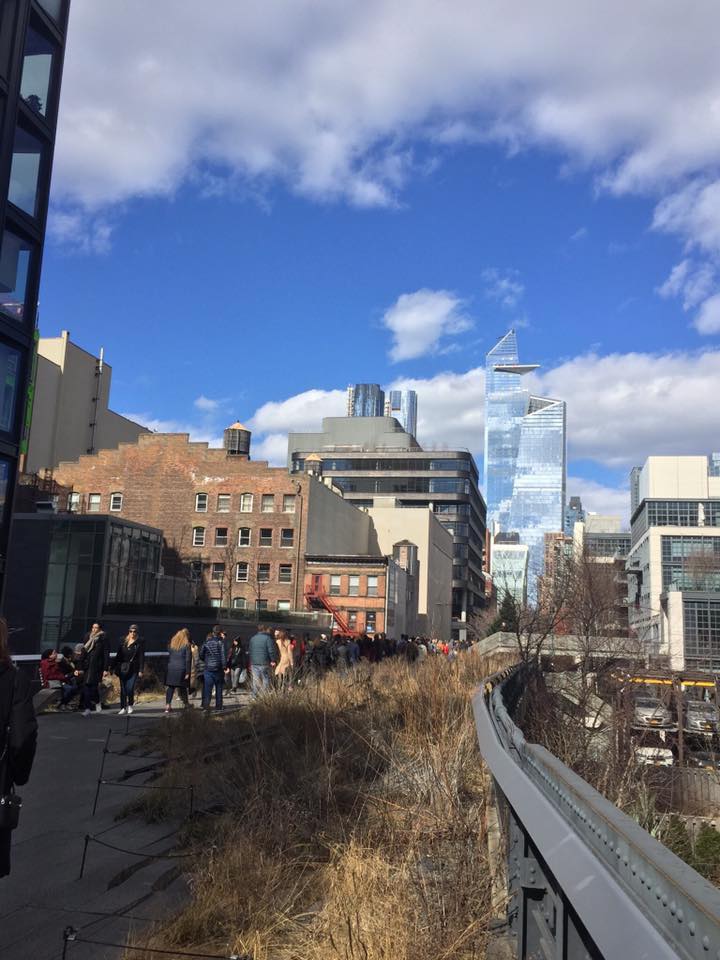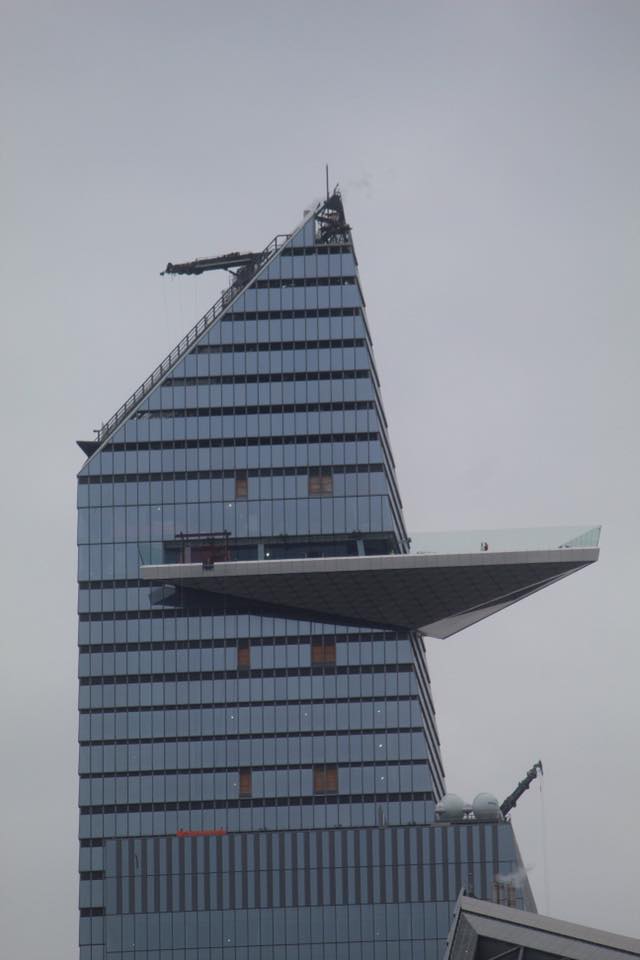The most famous example in NYC of popular (and sanctioned) street art is the now-defunct 5Pointz project in Queens, NY. Immortalized in pop culture, the owner of large, industrial warehouse let a street art collective use the entire building exterior as a showcase for artists. The regularly-changing art drew visitors from all over the world.
(The building was, sadly, sold and demolished a couple of years ago)
Some street art, however, can be both legitimate and anarchic. Some great examples of this are the unsanctioned works of Banksy, who has gained international acclaim for his guerilla art. Also, the Berlin Wall became covered in street art and graffiti by the end (mostly the western side), as Germans expressed their frustrations with the wall through this art. One section of this wall-- and its art!-- is preserved in a midtown Manhattan office plaza. A surprising example of legitimate, but originally unsanctioned, street art is the famous Wall St bull statue. Contrary to popular belief, this famous sculpture was not sanctioned by the city. Italian-born artist Arturo Di Modica spent $360,000 of his own money to create it, as a gift to the people of New York, and installed it without permission in front of the New York Stock Exchange in December 1989. The city planned to remove the 'vandalism', but kept it (and moved it to its long-standing location by Bowling Green) due to popular outcry. And what would the Financial District be without this beloved icon?
Street art is, to me, a living and breathing sign of a city's creative heart. It takes drab walls and squares and adds color to them. It draws you to neighborhoods and communities you might otherwise not have discovered. This is why I am so passionate about it.
I hope that, by offering these tours, I can pass on this passion to visitors... and help them see parts of the city that are vibrant and alive. And, of course, to continue the discussion of how we define this evolving art form.


